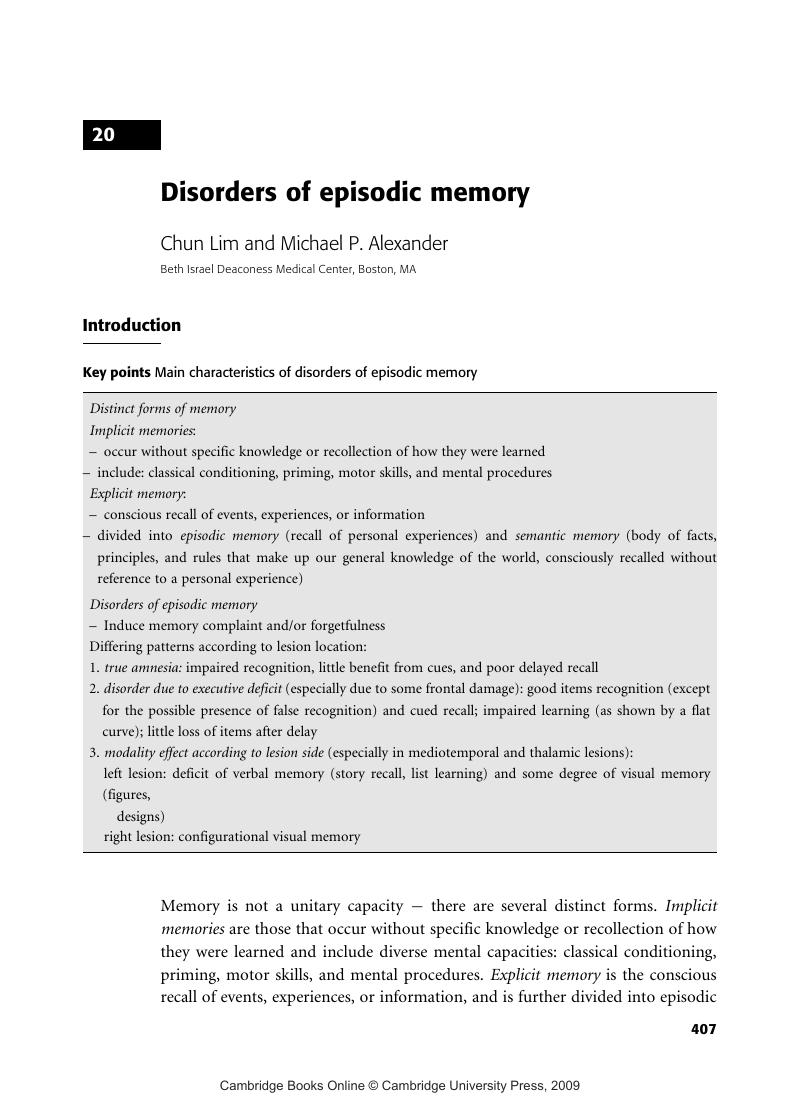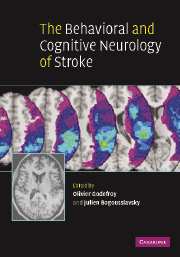Book contents
- Frontmatter
- Contents
- Contributors
- Preface
- 1 Evaluation of cognitive and behavioral disorders in the stroke unit
- Motor and gestural disorders
- Aphasia and arthric disorders
- Hemineglect, Anton–Babinski and right hemisphere syndromes
- Agnosia and Bálint's syndrome
- Executive and memory disorders
- 19 Dysexecutive syndromes
- 20 Disorders of episodic memory
- 21 Working memory dysfunctions in stroke patients
- Behavioral and mood disorders
- Dementia and anatomical left/right syndromes
- Index
- References
20 - Disorders of episodic memory
Published online by Cambridge University Press: 10 October 2009
- Frontmatter
- Contents
- Contributors
- Preface
- 1 Evaluation of cognitive and behavioral disorders in the stroke unit
- Motor and gestural disorders
- Aphasia and arthric disorders
- Hemineglect, Anton–Babinski and right hemisphere syndromes
- Agnosia and Bálint's syndrome
- Executive and memory disorders
- 19 Dysexecutive syndromes
- 20 Disorders of episodic memory
- 21 Working memory dysfunctions in stroke patients
- Behavioral and mood disorders
- Dementia and anatomical left/right syndromes
- Index
- References
Summary

- Type
- Chapter
- Information
- The Behavioral and Cognitive Neurology of Stroke , pp. 407 - 430Publisher: Cambridge University PressPrint publication year: 2007



